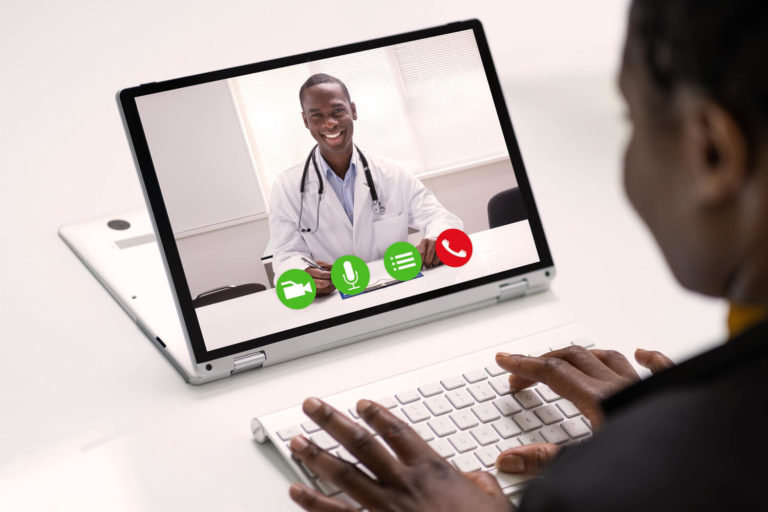Top 5 Telehealth Technology Tools for Clinicians
The current upswing in telehealth popularity among patients is good news for clinicians. Whether it’s a diabetic checking in with her doctor, or a parent pointing a webcam at their kid’s poison ivy symptoms—the demand is out there.
Computers and mobile devices that send digital communication remotely enable your team to deliver healthcare in real-time—right at the moment patients need them most. Telehealth technology tools for clinicians are defining the future of healthcare.
Benefits of telehealth technology tools for clinicians
Telehealth tools for clinicians have been a boon for providers and patients alike—both as healing assistants and as bottom line supporters. The following well-documented benefits demonstrate why.
Cost savings
While telehealth is helping your patient cut costs—doctor’s visit fees, insurance and copays, transportation, childcare expenses, and missed work hours—real-time telemedicine allows patients to receive quality care from the comfort of their homes at a discounted rate. Telehealth tools for clinicians are inexpensive to implement, and virtual visits are much less costly than regular doctors’ appointments.
These robust tools for clinicians help eliminate much of the labor required for check-ins, data inputting, and follow-up appointment scheduling—which can be automated or addressed by one clinician during one efficient telehealth visit.
Access to medical specialists
Primary care tools for clinicians help PCPs track a patient’s entire care journey and collaborate with specialists—no matter where they’re located. The physician shortage we’re experiencing in the U.S. is intensifying with each passing year. A recent AAMC study projects a clinician shortfall of up to 139,000 by 2033. That’s why it’s critical to ensure that physicians’ services aren’t restricted to specific regions.
Telehealth tools for clinicians are especially helpful for rural Americans who would normally need to travel to a big city to get specialized care. Patients with mobility and childcare issues have also happily embraced the convenience and efficiency of virtual medicine.
Education and training
Tools for clinicians enable your team to receive specialized training and a wealth of resources for professional development. Specialists of all kinds can develop the coveted communication skills that were not necessarily covered during their traditional training. With each telehealth visit, a clinician gains an opportunity to get to know the person behind the patient, cultivating trust and alleviating stress (an otherwise major impediment to optimal healing).
Patients, on the other hand, enjoy the educational benefits of tools for clinicians indirectly. Their learning continues between telehealth visits—especially if they’re managing a chronic condition. The more patients understand their health, the more empowered they feel to participate in decision-making and research each option presented to them by their providers.
Increased revenue
Once you observe how telehealth tools for clinicians begin to improve workflows and streamline communication between team members, you’ll be able to quantify your organization’s time savings. Telehealth helps you reduce overhead costs and shorten appointment times. Automated messaging, organization-wide patient databases, and telehealth visits enable practitioners to spend their work hours more productively while delivering more care than ever before.
This improvement in efficiency makes it easier to scale your practice or healthcare organization without sacrificing the quality of care. In fact, patients often say they feel more cared for when they receive check-in messages, appointment reminders, and follow-up calls from providers.
Telehealth tools for clinicians that improve efficiency
With all the telehealth tools for clinicians out there, it can be difficult to decide which is most valuable for your team’s unique needs. Here’s a list of the most beneficial tools for clinicians at any size practice or organization:
1. Online patient portals
These telehealth tools for clinicians enable patients to access their secure personal health history and reach out to providers 24/7. No more researching office hours at a doctor’s multiple locations, or waiting for a return call about a basic care plan question. Patient portals allow patients to:
- Request specialist referrals
- Schedule non-urgent appointments
- Refill prescriptions
- Access test results
- Read their telehealth visit summaries
- Reference their medical history
- Learn from patient education libraries
- Understand their insurance or Medicare benefits
- Update insurance or contact information
- Pay their providers
When it’s time for a follow-up appointment, vaccination, or prescription refill, these portals can also send automated reminders via text or email—a critical service for busy or forgetful patient populations.
2. Patient Relationship Management platforms
Convenient, effective telehealth tools for clinicians are so important to patients that they may be willing to switch providers in order to get it. Therefore, if you’re trying to maintain your current patients and attract new ones all while improving care delivery, consider implementing a Patient Relationship Management platform.
Managing your team’s workflow and enhancing your reporting systems should not require juggling spreadsheets, CRMs, and EHRs—which can cause clinicians to misplace patient data, miscommunicate instructions, or miss clues that a patient is becoming disengaged.
Patient Relationship Management platforms allow you to tie your tools together, including telehealth technology tools, to allow your organization to scale without having to figure out how to restore fragmented records.
They provide a 360-degree view of a patient’s health history—for all stakeholders. When primary care physicians, specialists, physical therapists, and mental health practitioners are all on the same page and regularly checking in with each other, quality of care improves and patient relationships thrive.
3. Quality webcams
With telehealth becoming the norm for many patient populations, clinicians are expected to deliver a professional online experience as close to a live office visit as possible.
Make sure your team’s webcams offer high-quality video with a simple, nimble setup. You should be able to plug it into any available USB port on a laptop, desktop, or mobile phone that has Windows, Mac OS, Chrome, or Android.
Your camera should be mounted to a tripod for more intimate interactions. It should be designed to work with Skype, Google Hangouts, and FaceTime for Mac—whatever platform the patient is most comfortable with.
Do a good deal of research to ensure your camera provides premium technical performance, user-friendly design, and operational ease in any collaborative environment.
4. Quality microphone
Next-generation conferencing platforms, network-based cameras, and quality microphones are all highly valuable tools for clinicians. They make it possible to install collaboration systems in hospital rooms and doctor’s offices to facilitate more efficient telehealth visits.
An array of microphones can be installed permanently either in a room or on roll-in carts. Make sure they feature a long pick up range—approximately 30 feet—which enables voice capture of patients as well as all clinicians in the room.
You can also invest in systems that extract voice input from ambient noise via telephones, speech recognition systems, or hearing aids. Surround sound produces a crisp, intimate listening experience. Other technologies automatically steer a “listening beam” to the active talker, reducing background noise.
5. Reliable internet connection
The most critical aspect of any successful telehealth visit is a secure broadband internet connection. The speed of your internet connection will determine your video quality and the speed of your data transfer. A basic business broadband connection—at about 50-100 megabits per second—should be sufficient.
Telehealth tools for clinicians can help you level up your care
Patients request them, clinicians embrace them—telehealth tools for clinicians are empowering all stakeholders in U.S. healthcare organizations. Wondering which ones will best fill the needs of your team? Read our comprehensive guide to Telehealth for details on how best to choose and implement your tools for clinicians.


